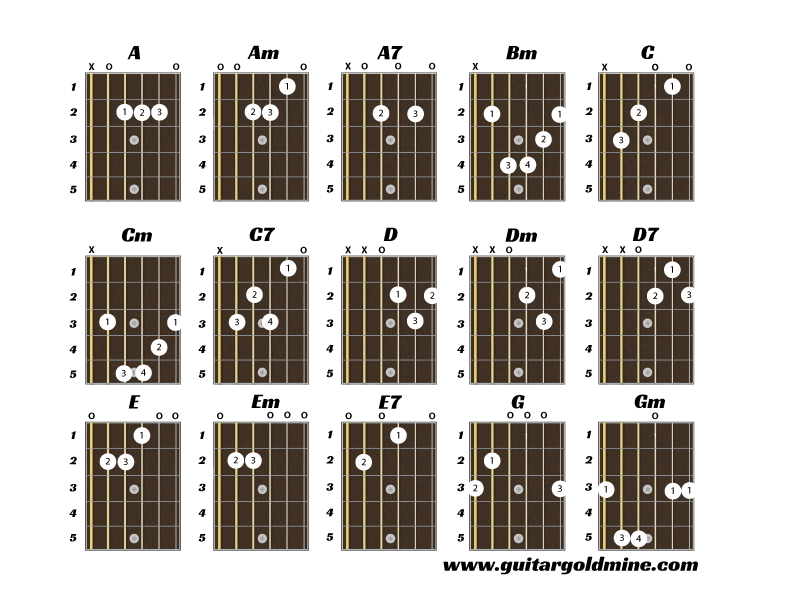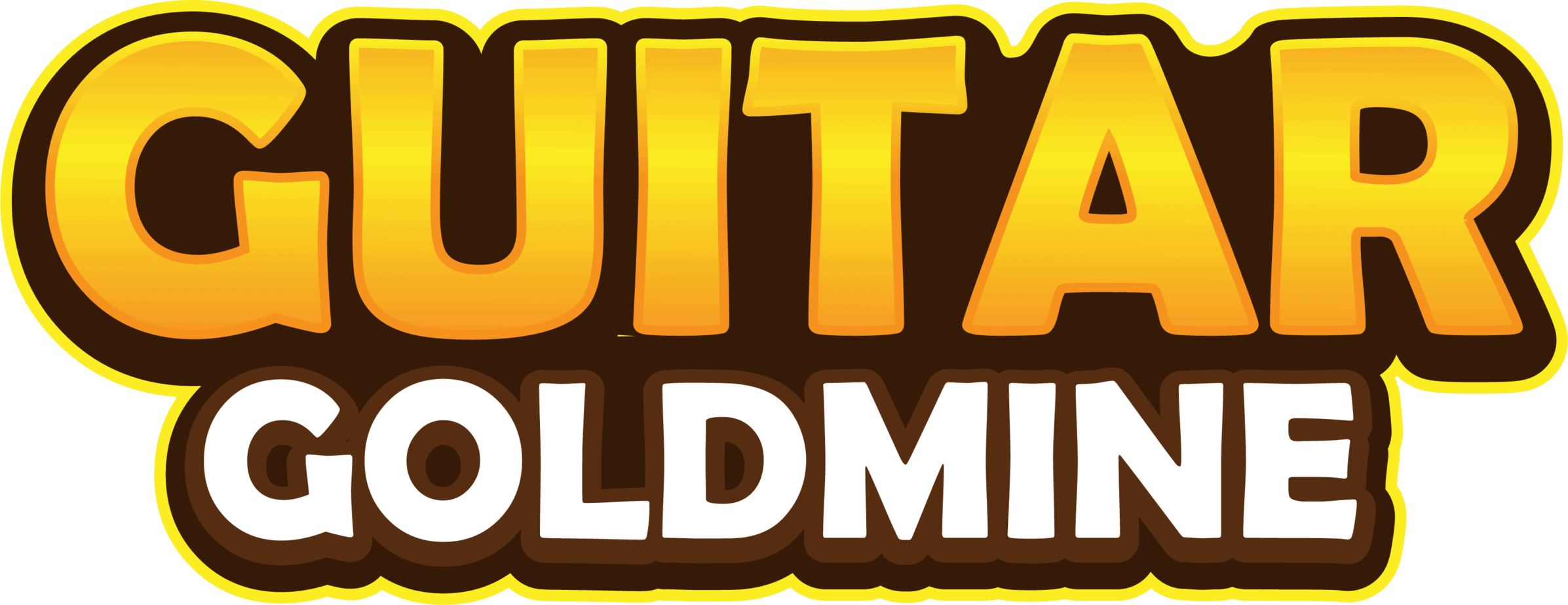Discover the chords to learn when starting to play the guitar!

So I see a blog post talking about the numerous ways in order to play a single chord. Once you move a little further down the guitar playing path it’s really not uncommon to know a few different ways in order to play a single chord and break one chord form or the other out depending on the song. This post did get me thinking though. At some point you have to learn that first form. So I sat down in order to create a chart of the 15 chords that I think will help you to get started. These chords should enable you to play many songs as well as get your fingers limbered up to learn more difficult chords as well. Chords are not always the easiest thing but please push on they will help you.
Beginner on the guitar? Learn to read these chord diagrams!
The chords are presented as chord diagrams. If you cannot read them, do not panic, we are about to explain everything to you!
- A chord diagram shows the neck of the guitar seen from the front, as if you held your guitar in front of you. The bass string (the low E string) will be on the left.
- The frets are symbolized by squares.
- The white circles tell you where to place your fingers. They are numbered to specify the position of each finger. From 1 for the index to 4 for the little finger.
- An “X” over a string indicates that it should not be played
- A “O” indicates that you should play the “open string”, this means that you will let the string ring out even though you are not pressing on it.
That’s all you really need to know in order to get started and understand the chord charts that are presented here.
Why these 15 beginner guitar chords?
These major, minor and seventh chords are great to start with for a few reasons:
- They are all located in the bottom of the neck and are “open” chords, that is, they are quite easy to achieve and remember! They are adapted to the level of a guitarist who starts. Here, very few barre chords and no super complex finger positions.
- These chords will allow you to play many songs even if you are a beginner! Indeed, they are very frequently used, so you will have access to a wide repertoire in different styles (pop, rock, reggae, blues, folk …) very quickly.
- With these 15 basic guitar chords, you will be able to gain a better understanding of how to play guitar at the most basic level.
As you can see, these beginner guitar chords are a stage in which all guitarists get started. To make it easier, we offer you a downloadable PDF file that you can take everywhere with you!
Guitar is a lifelong learning process. It never stops and even the most experienced guitarist will usually confess they still have much to learn Don’t get discouraged if any of these chords on guitar seem a little difficult at first. Just stick with it, practice your hand placement, and it will become muscle memory after you put the work in. We all have to start somewhere I can’t stress enough that learning to play guitar is one of the most rewarding things you can do. It can also be one of the most challenging. Here are some tips to make this easier.
1.You can learn these chords in any order you choose so take your time and make certain that you practice how you would play.
2.Keep working until each and every note sounds out perfectly. Hand placement is important and eventually it will become muscle memory. You just have to put the work in so you can get there.
3.Pick a couple to work at before moving on to the next couple. Just like eating a pizza, one slice at a time.
- Once you get the chords down practice going between some of them, back and forth improving your changing speed and accuracy of your finger placement.
Moving on to barre chords is a big step when mastering the guitar, and the B minor, C minor and G minor chords are a great place to start. A barre chord involves placing your finger across several strings at once, as opposed to just using the tip of your finger to hold down a specific note.
Here’s how to play Bm and Cm:
- Rest your finger flat across strings 1 to 5 on the second fret (apply just enough pressure to get the notes to sound when you play them).
- Put your third finger on the fourth fret of the fourth string
- Your fourth finger goes on the fourth fret of the third string
- Your second finger goes on the third fret of the second string
- Strum all chords in unison without hitting the sixth string
Now the beautiful thing about learning this particular chord is that the next one C minor is identical to it except you move everything up one fret. In fact once you learn this shape you can continue to move up the fingerboard creating different chords with this very same shape.
Now lets talk about G minor.
- Rest your finger flat across strings 1 to 5 on the third fret (apply just enough pressure to get the notes to sound when you play them).
- Put your third finger on the fifth fret of the fifth string
- Your fourth finger goes on the fifth fret of the fourth string
Once again, once you learn this shape you can continue to move up the fingerboard creating different chords with this very same shape.

Recent Comments